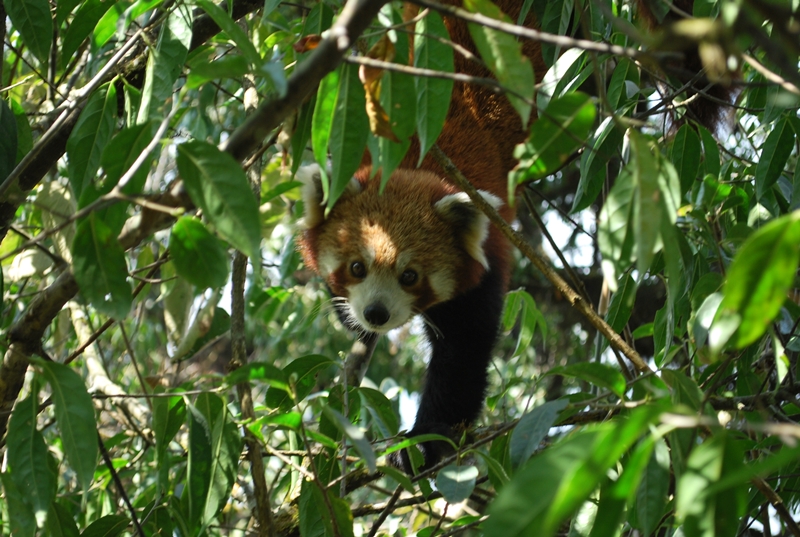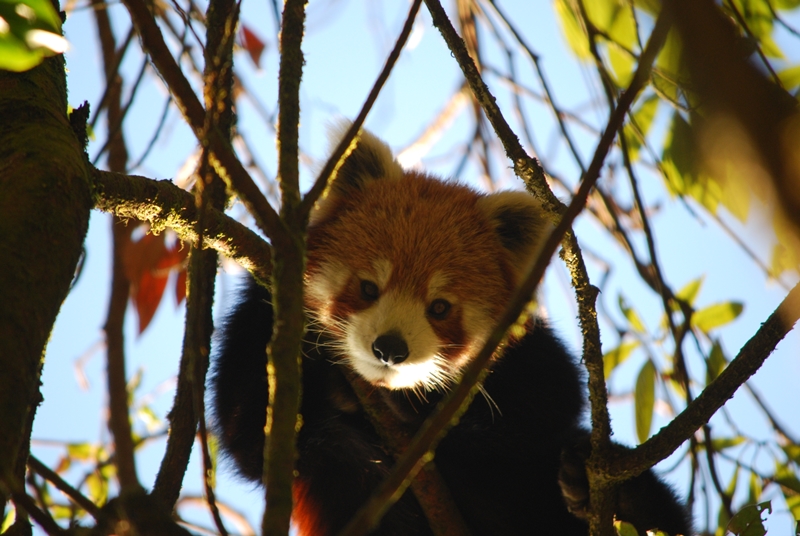
Project: Reforestation of Red Panda Habitat in Eastern Nepal
2024 Project Partner: Red Panda Network (RPN)
Red Panda Network is committed to the conservation of wild red pandas and their habitat through the education and empowerment of local communities.Find out more here Red Panda Network (RPN)
Donate or Set up a Fundraising Page to support this project here.
Red Panda Network (RPN)
Red Panda Network is a non-profit organisation dedicated to the conservation of red pandas and their habitat in the Eastern Himalayas. Founded in 2007, the organization operates primarily in Nepal but also engages in conservation activities across red panda ranges in Bhutan. Their work focuses on preserving the forests where red pandas live, which are crucial not only for the species’ survival but also for the ecological health of the region. The organization employs a community-based approach, involving local people in conservation efforts through education, sustainable livelihood initiatives, and anti-poaching activities. RPN also conducts scientific research to better understand red panda behaviour and ecology, which informs their conservation strategies. RPN aims to achieve long-term preservation of the red panda and its natural environment.
Red Pandas
Red pandas are small, arboreal mammals native to the mountainous forests of the Eastern Himalayas and southwestern China. Characterized by their reddish-brown fur and bushy tails, they are often found in the dense canopies of high-altitude temperate forests, where they primarily feed on bamboo. Despite their elusive nature, red pandas face significant threats that have led to their classification as Endangered by the IUCN Red List of Threatened Species. One of the primary threats to their survival is habitat loss due to deforestation for timber extraction and agricultural expansion. Additionally, red pandas are vulnerable to poaching for their distinctive pelts and for the illegal pet trade. Climate change also poses a long-term threat by altering the ecological balance of their forest habitats. These combined pressures have resulted in a declining population, making concerted conservation efforts crucial to their survival.
Eastern Himalayas
The Panchthar-Ilam-Taplejung (PIT) corridor, located in eastern Nepal within the Kangchenjunga landscape, is a critical area for biodiversity. This region forms an ecological bridge that connects several protected areas across Nepal into India, creating a continuous stretch of habitat that is vital for the genetic diversity and survival of many species.
For red pandas, the PIT corridor provides a crucial refuge in their shrinking habitat. The area’s extensive forests of bamboo—their primary food source —along with high-altitude grasslands and rhododendron forests, offer not just sustenance but also shelter from predators and human activities. The corridor’s significance extends beyond red pandas, supporting a wide array of flora and fauna, including the critically endangered Chinese pangolin, White-rumped vulture and Bengal tiger, and making it a key region for conservation efforts aimed at preserving the Eastern Himalayan broadleaf forests’ unique biodiversity.
The PIT corridor faces several specific threats that jeopardise its ecological integrity and the species it supports. One of the most pressing issues is deforestation driven by agricultural expansion, as local communities clear forest land for crop cultivation and livestock grazing. This not only reduces habitat size but also fragments the contiguous landscapes necessary for the movement and genetic diversity of wildlife, including the red panda. Additionally, illegal logging for timber and firewood extraction further degrades this critical habitat. Another significant threat comes from infrastructure development, such as road construction, which disrupts animal migration patterns and increases human-wildlife conflicts. Climate change compounds these challenges, altering precipitation patterns and temperature, which can shift vegetation zones and affect the availability of key resources like bamboo. Collectively, these threats impose considerable stress on the PIT corridor, demanding targeted conservation strategies to maintain its biodiversity.
Reforestation Project
RPN’s reforestation project within the PIT corridor focuses on restoring native forest cover by planting indigenous trees and bamboo, which are essential for the diet and shelter of red pandas. Efforts are concentrated in Ilam district of eastern Nepal where there is approximately 1,000 hectares of barren red panda habitat. One of the largest plots of barren land in Ilam is in the Jaubari village, located on the Nepal-India border and crucial for landscape connectivity.
By replenishing degraded lands, the initiative aims to expand the available habitat and create biological corridors that facilitate safe wildlife movement across fragmented landscapes. The reforestation efforts also involve local communities, providing them with education and incentives to participate in conservation activities. This not only aids in habitat restoration but also promotes sustainable land-use practices, helping to ensure the long-term health and resilience of this region.
The majority of tree saplings for planting and restoration come from RPN’s forest conservation nurseries which are being managed by local Community Forest User Groups (CFUGs), livestock herders and local councils.
The Project Fund will support reforestation of one hectare of land – to include land purchase, tree planting and the salary of a local land
steward.
Images courtesy of Sonam Tashi Lama and Saroj Magar / RPN








